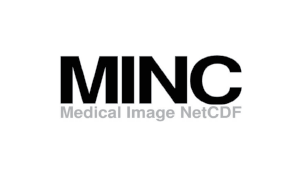
MINC is a flexible, multi-modal format for medical imaging data, as well as a set of programming libraries and tools for manipulating and visualizing MINC files. MINC was conceived and developed for the medical imaging research community by Peter Neelin in 1992, based on the NetCDF data format. Since 2006, MINC 2.0 provides support for multi-gigabyte datasets using the HDF5 data format. The MINC 2.0 libraries and tools are backward compatible with the MINC 1.0 format.
Download MINC here
Unique Features The MINC 2.0 library and tools are actively supported and maintained by developers in several image research labs around the world. Visit WIKIminc for instructions and Documentation Analysis & Statistics Tools
PublicationsUnique features
Contact : minc-users@bic.mni.mcgill.ca or
minc-developers@bic.mni.mcgill.ca
Publications

